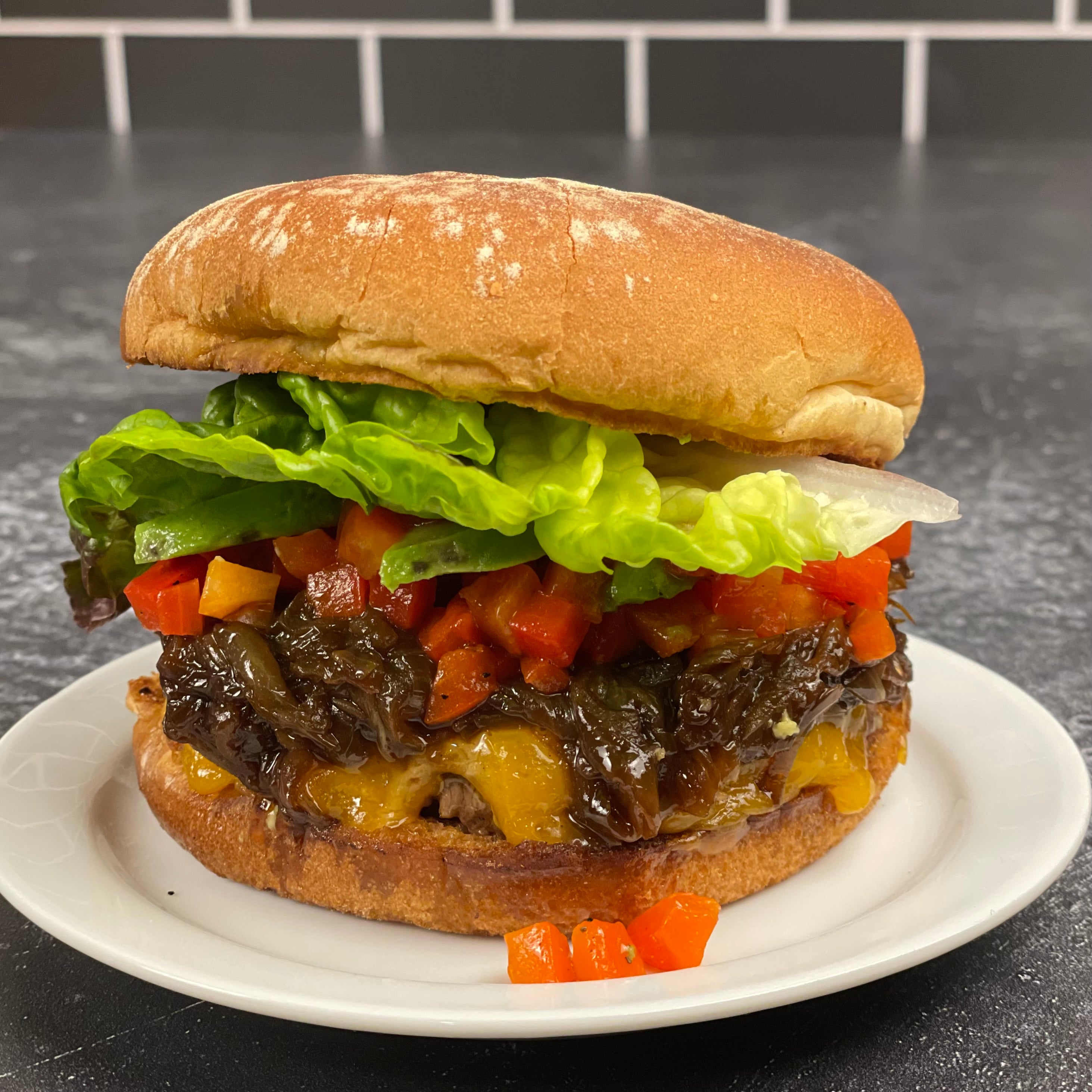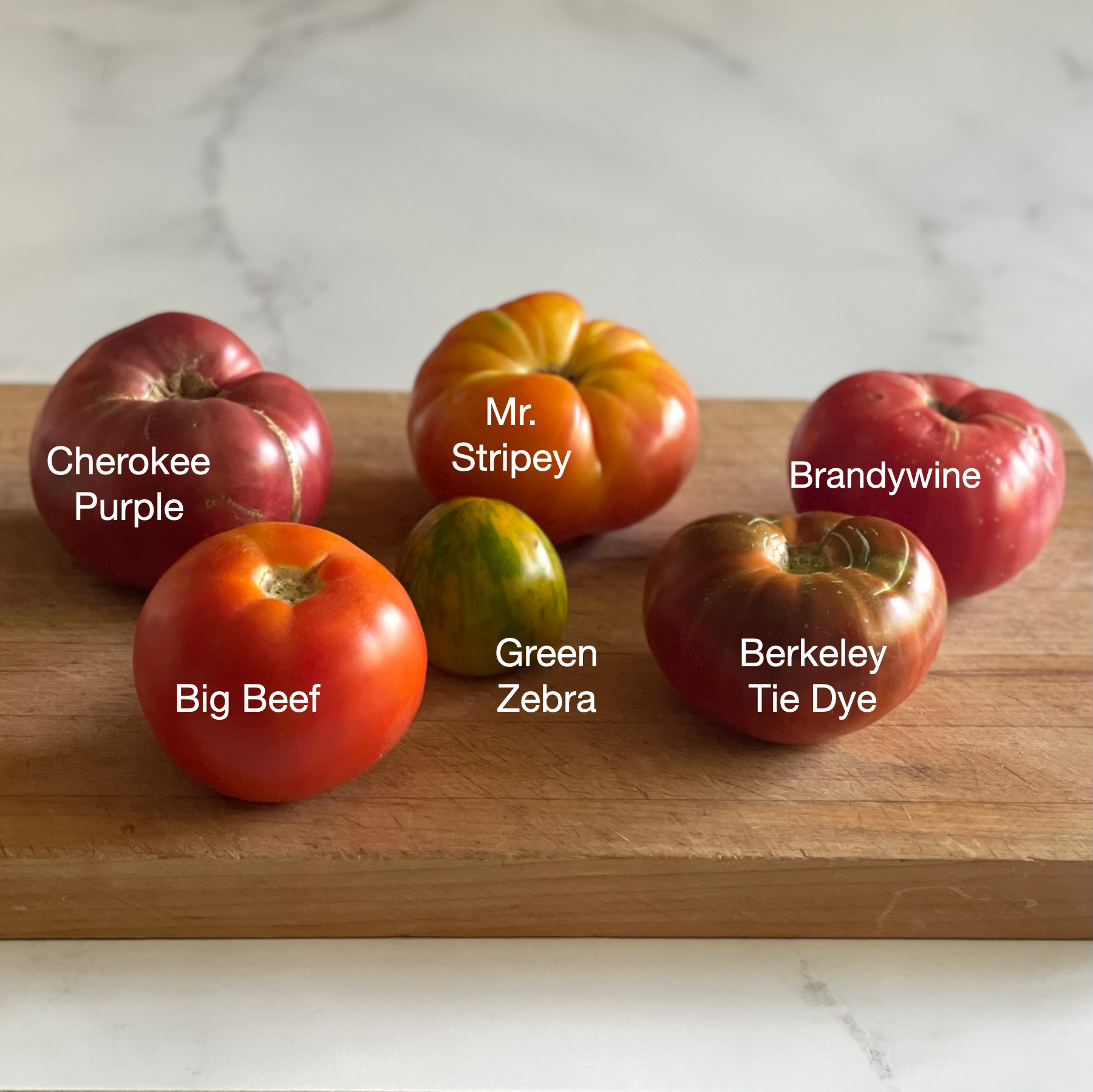
Building a Better Burger
Note: if you are vegan or vegetarian, you might enjoy our Portabello Burger recipe.
Building a better hamburger requires attention to three factors: the quality of ingredients, cooking technique, and good assembly considering the balance of flavors, textures, and stability. We missed writing to you on National Hamburger Day (May 28th), however, did test hamburgers throughout May and early June with the intention of sharing a few recipes and our general thoughts about what a constitutes a good hamburger. Here are our thoughts.
Choosing the Best Beef
Choosing the best beef(*) for your hamburger starts with understanding the optimal lean meat to fat ratio. A good hamburger has enough fat to keep the patty juicy and flavorful, and an 80/20 lean-to-fat ratio is considered ideal for a flavorful juicy burger. Chuck, which is a shoulder cut, is most often recommended due to its naturally ~80/20 lean-to-fat ratio and deep beefy flavor. For more nuance you can create blends using different cuts. Chuck (80/20), brisket point—not the brisket flat—at 70/30, and sirloin (90/10) in equal parts will yield the desired 80/20 ratio and a more interesting burger.
Best Technique for Grinding Hamburger
Once you've selected the beef, it's time to grind. The best technique to grind your own hamburger is to use a meat grinder or a grinder attachment on a stand mixer—we use a KitchenAid. This will ensure an even grind and let you control the coarseness of your meat. Some cooks recommend cutting the meat into 1-inch cubes and freezing it for about 30 minutes to firm the fat, making it easier to grind and preventing it from smearing, which could lead to a tough burger. It's also essential to keep your grinder's components very cold to prevent the fat from rendering while you're grinding. If you are going to be grinding a lot, place the components in the freezer along with the meat. As we generally only cook for the two of us, we do not find it necessary to chill the components nor freeze the meat, in fact, cutting the meat into long strips makes grinding fast and efficient, so that has been our method of choice rather than relying on the freezer method.
After grinding, loosely shape your patties without overworking the meat, as too much handling is another thing that can make burgers tough. We recommend ¾” to 1” high with a ¼” indentation in the center, which will prevent the cooked burger from forming a dome and better support burger stability at the assembly stage. Season with salt and pepper before cooking. We used smoked salt for an extra layer of flavor.
The Most Popular Methods for Cooking Hamburger
- Grilling: This is the classic way to cook a burger and ideal for outdoor cooking. Grilling gives a charred, smoky flavor. Preheat your grill to high heat, place the patties, close the lid, and cook for 3 to 4 minutes per side for medium-rare. An internal temperature of 160°F (71°C) is recommended for safety, however, please note that this will result in a burger closer to well done.
- Pan-searing: This method allows for a delicious crust to form on the patty. Use a cast-iron or other heavy skillet for this. Heat the skillet over medium-high heat, add a little olive oil, then add the patties when the oil is hot. Cook for about 4 minutes per side for medium-rare.
- Broiling: If you have a broiler, this is a way to mimic the high, direct heat of a grill. Position the rack so that the top of the patties will be about 3 inches from the broiler. Broil for approximately 4 minutes per side for medium-rare.
No matter which method you prefer, resist the urge to press down on the patty while cooking, as this can cause the juices to run out, resulting in a drier burger. Allow the patties to rest for a few minutes before serving to let the juices redistribute throughout the meat. Each method will yield a different texture and flavor, so it may take a few tries to find your favorite way to cook a burger.
Other Ingredients
A classic burger is likely to be fairly dense, so you’ll want fresh, soft buns rather than chewy bread; top choices include brioche or potato rolls (as shown in our photo). My father was born in Hawaii, so we grew up with King’s Hawaiian Sweet Bread, something now made in California and available nationwide. Use olive oil to coat and lightly toast or grill the inside of the buns for flavor and textural interest.
For our gooey layer we opted for a sharp cheddar on our burger, Monterey Jack, or even blue cheese is also popular.
You’ll want to incorporate some acid for contrast, either a commercial relish or one that is homemade. Here is a link to our easy to make Sweet & Smoky Roasted Red Pepper Relish. Important: drain the relish before adding to the burger to avoid sogginess!
Some folks like the assertiveness of raw onions, but I’ve never been a fan. Here is our recipe for Balsamic Caramelized Onions, which add a softer, rich umami to the burger.
We kept things simple with mayonnaise and ketchup—this burger did not cry out for mustard—and we mostly used romaine lettuce, but also experimented with arugula (we have SO much in our garden), and blanched kale, which gave the burger a very stable base and a nice deep green color.
Assembly
I won’t share images of all of our variations, however, it was a real education to capture a image of a finished hamburger before the cheese congeals or the bottom bun become soggy and the entire structure starts to lean (or collapse!).
Subsequent versions included a layer of greens on the bottom as well as the top, which both added to stability as well as looked more balanced visually.
We don't eat a lot of meat, however, really appreciate a good hamburger from time to time. We enjoyed thinking about what we like and hope a few of these ideas are helpful or inspiring to you!
Happy Cooking!
Liz & Donald





